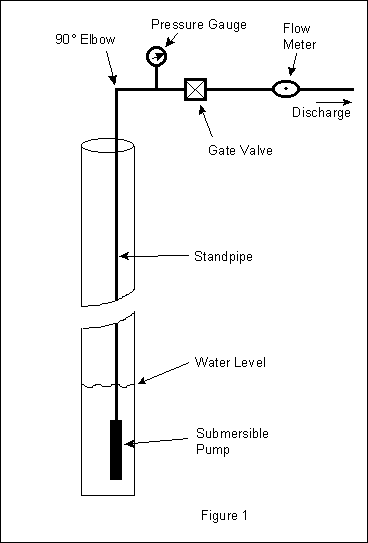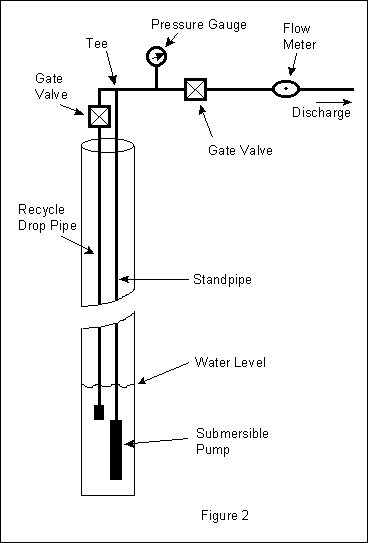Brent E. Huntsman
Chief Hydrogeologist
Terran Corporation
4080 Executive Drive
Beavercreek, Ohio 45430-1061
(937) 320-3601
Introduction
With increasing emphasis on the hydraulic testing of tills and other formations of low permeability comes the problem of how to maintain, perhaps for several days, low discharge rates with typical "oversized" submersible pumps. Sometimes pumping rates must be restricted to a quarter of a gallon per minute or less, which cannot be maintained with most pumps by valving down the discharge without surging and perhaps shut-down due to thermal overloading.
A solution to the problem is offered by a piping arrangement in which part of the pumped water is returned to the well, permitting normal pumping rates, while allowing a controlled and steady low discharge of water from the "aquifer".
Methodology
A typical submersible pump installation is shown in Figure 1. The discharge line is usually connected at the top of the well to a 90° elbow followed by a pressure gate and a valve to regulate the discharge. Either a totalizing flow meter or orifice plate typically completes the pumping system.
By inserting a tee after the 90° elbow at the top of the discharge line, as shown in Figure 2, all or a portion of the pump discharge can be shunted back to the well through a drop pipe and gate valve. To avoid excessive turbulence our experience has shown that the drop pipe should extend below the lowest anticipated pumping level, or the top of the submersible pump. The gate valve should be as large or larger than the inside diameter of the drop pipe to avoid constricting the flow.
To regulate the aquifer discharge, the pump is started with the valve in the discharge line closed and the valve in the drop pipe completely open. After pump discharge has stabilized the valve in the discharge line is slowly opened, while the valve in the drop pipe is partially closed until the desired discharge rate and pack pressure is achieved. At the end of the aquifer test the drop pipe valve is completely closed, coincident with the shutting off of the pump, to prevent backflow into the well.
With the simple addition of a few accessories to the typical submersible pump installation, precise control over the discharge rate can be achieved. The technique provides an efficient and reliable method of aquifer testing in low-yielding formations.


This paper was originally published in:
HYDATA
September 1994, 13(5), p. 9.
